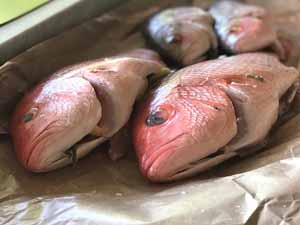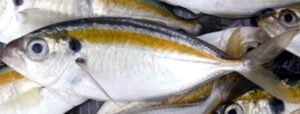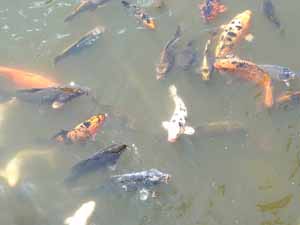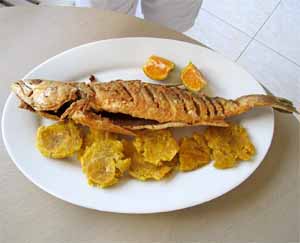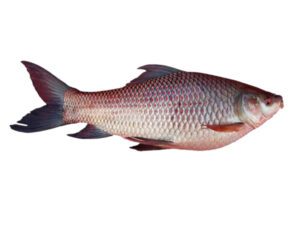Robalo fish are well known for their great taste, nutrition and several health benefits. They can be enjoyed in many different ways and are perfect for frying, grilling and baking. Robalo is also known as the “snook”, and it is mainly found in warm, shallow waters. These fish naturally live in the Atlantic Ocean, from North America to South America. In some places, they are also found in freshwater rivers and estuaries. You can find the robalo fish near mangroves, seagrass beds, and coral reefs.
Robalo fish have a relatively long, and slender body and their body coloration can vary, but are typically of silver with a darker back. They are carnivores and are also often found in estuaries where freshwater meets the sea. Robalo is an important fish species for local economics, and they are a key part of commercial fishing and tourism. They are also popular among the sport fisherman.
What is robalo fish?
Before discussing further about this fish species, let us first describe what robalo fish actually is? Actually, robalo is a specie of marine fish in the family Centropomidae of the order Perciformes. They are also known by some other names such as common snook, sergeant fish, or just snook. Scientific name is Centropomus undecimalis.

Robalo fish in English and Spanish
In English, the robalo fish is called “common snook” just “snook” or “sea bass”. And in Spanish it is called “robalo” or “sábalo”.
Characteristics
The robalo fish have several distinctive physical characteristics which makes them easily recognizable. They have a long, slender body that papers towards the tail. Their head is relatively large as compared to their body, with pointed snout. They have large mouth with sharp, conical teeth. They have two dorsal fins. The first dorsal fin is spiny, while the second one is softer and more rounded. The pectoral fins are large and are located towards the front of their body. Pelvic fins are relatively small and are positioned underneath the body. And their long anal fin runs along the underside of their body, and the tail fin is forked.
Body coloration of the robalo fish is typically silver or light gray with a darker back, and the underside is paler. They have prominent black stripe running from their head to their tail. They have large and smooth scales that cover their whole body. Coloration of the scales are usually silver or pale and may appear iridescent.
Size and weight
Robalo fish can grow an average body length of between 60 to 90 cm. But sometimes, they can grow up to 1.2 meters long. An adult robalo can weigh between 5 to 15 pounds. Although, they can sometimes reach upto 30 pounds or even more.
Diet
The robalo fish are carnivores and they eat other fish and animals. Their diet mainly consists of smaller fish and invertebrates, like baitfish and shrimp. They are highly skilled hunters and they use their sharp teeth for catching their prey. The young robalo start by eating tiny invertebrates, and as they grow, they change their diet and begin to eat larger fish and crustaceans. Their diet changes depending upon the availability of food in their environment.
Behavior
The robalo fish are skilled hunters. They often hides among mangroves, underwater plants, or rocky areas. They generally wait quietly until a small fish or shrimp comes close, and then suddenly lunges to catch it.
Reproduction
The robalo fish generally breed during the warmer months. Their natural breeding season is typically from late spring to summer when the water is warmer. During their breeding season, they move into shallow, coastal areas and estuaries where they lay their eggs. The female robalo releases thousands of eggs into the water. These eggs float to the surface of water and are fertilized by the male’s sperm. And once the eggs are fertilized, they hatch into tiny larvae.
The tiny larvae are called fry. The fry drift with the currents and slowly grow bigger. The fry start eating tiny plankton and small creatures found in the water. They generally move into more protected area as they grow like mangroves or seagrass beds. In such areas, they can find more food and hide from predators. They grow and become mature fish within their 2 to 4 years of age, and start the reproduction cycle again.
Lifespan
Average lifespan of a robalo fish is around 15 to 20 years.
Uses
The robalo fish are mainly used as food. They are very tasty and highly nutritious. They are also popular among the anglers who enjoy fishing for sport.
Cooking and recipes
Robalo fish can be cooked in many different ways. There are many recipes available to cook this fish. Here are some common and popular recipes and cooking ways:
Frying: Frying is the most common and popular way of enjoying this fish. Frying makes the robalo fillets crispy inside and keep the inside tender. For frying robalo, coat the fillets in flour, dip in beaten egg, and then coat with breadcrumbs. Heat some oil in a skillet over medium heat and fry the fillets for about 3 to 4 minutes per side.
Grilling: Grilling is also a popular cooking way of robalo fish. For grilling, season the fillets with salt, pepper and your favorite herbs or spices. Preheat the grill to medium-high heat. Don’t forget to oil the grill grates to prevent sticking. Grill the fillets well until the fish is opaque and flakes easily with a fork. Generally, grilling about 4-5 minutes per side will be enough.
Baking: Baking is a very easy, simple and healthy option for cooking this fish. For baking, season the fillets in a baking dish, and add a drizzle of olive oil or a few parts of butter on top. Heat the oven to 375°F and place the baking dish. You can add vegetables or a light sauce for extra flavor. Baking for 15-20 minutes will be enough to cook the fish properly.
Nutrition
The robalo fish are highly nutritious. A 100 gram serving provides:
Calories: Approximately 120-130 kcal
Protein: About 20-22 grams
Fat: Around 3-4 grams (less than 1 gram saturated fat, and the majority of the fat is unsaturated, which is healthier)
Cholesterol: Roughly 70-80 mg
Carbohydrates: 0 grams
Omega-3 Fatty Acids: Provides a modest amount of omega-3 fatty acids
Vitamins and minerals: Good source of vitamin D, vitamin B12, selenium and potassium.
Health benefits
As the robalo is a highly nutritious fish, so consuming it provides several health benefits. It is rich in very high-quality protein which helps to muscle building and repairing tissues. It is relatively low in saturated fat, and high in unsaturated fats. Unsaturated fats are good for heart health. It is also a good source of omega-3 fatty acids and these are healthy fats that support heart health by reducing inflammation, lowering blood pressure, and improving overall cardiovascular function.
Robalo is a good source of some essential vitamins, especially vitamin B12 and vitamin D. It is also a good source of some essential minerals, especially selenium and potassium. Consuming selenium rich food acts as an antioxidant and helps by protecting cells from damage and supports immune function. And potassium helps to regulate fluid balance, nerve signals, and muscle contractions. And all these features helps to support healthy blood pressure levels.
Taste
The robalo fish has a mild, sweet flavor. Its flesh is firm and white and has a slightly flaky texture when cooked. The taste is not overly strong, and the mild flavor pairs well with different seasonings and ingredients.
Price
Its very tough for us to tell the exact price of robalo fish. Because exact price depends on numerous factors such as location, season, freshness etc. Generally, you can expect the price of fresh robalo from $15 to $30 per pound. But the frozen robalo are less expensive than the fresh version with average price ranging from $10 to $20 per pound.
Any robalo fish for sale near me?
There are many different options available to purchase the robalo fish near your location. You can purchase from your local seafood markets, grocery stores, fish markets, restaurants, and from online seafood retailers.
